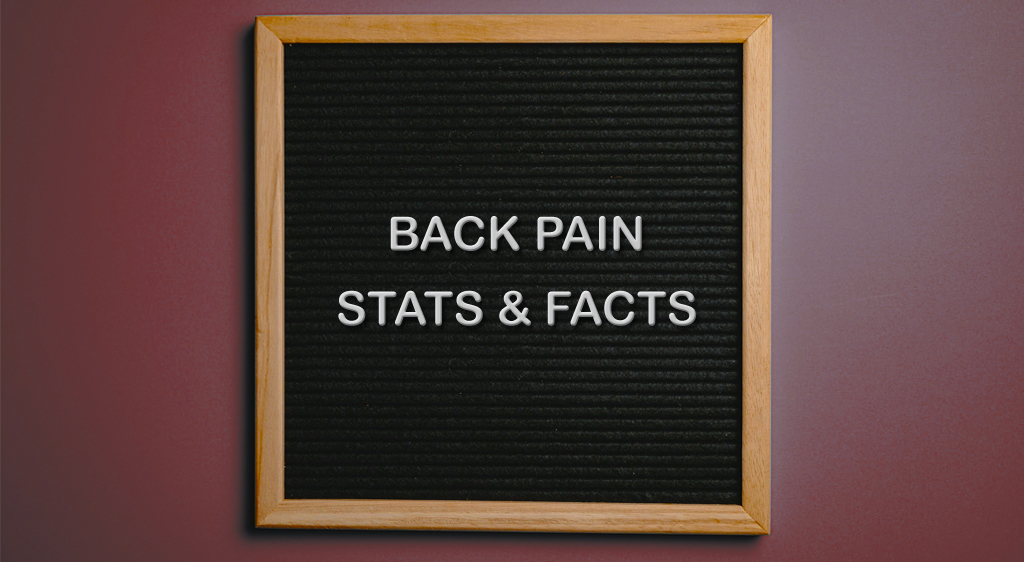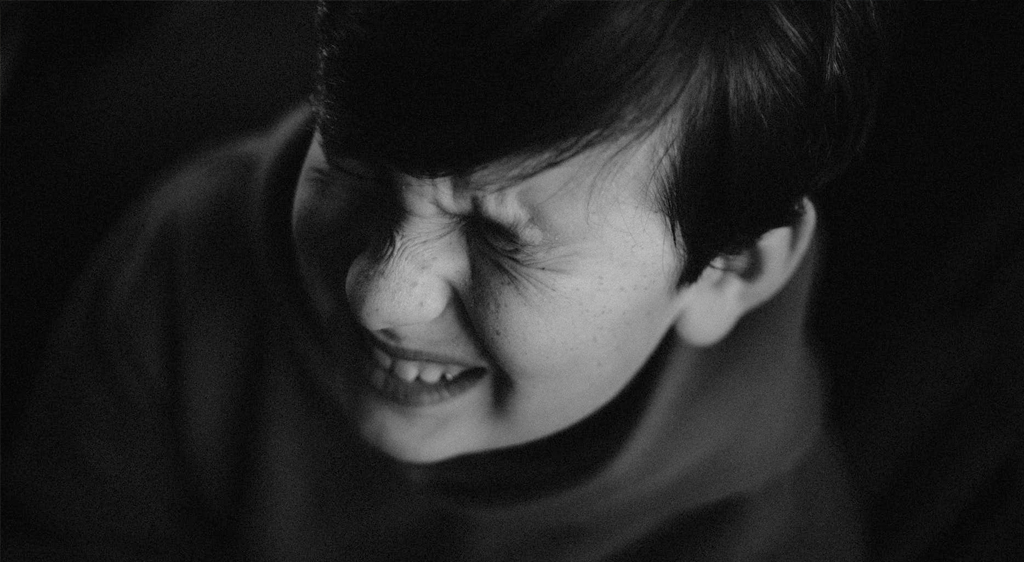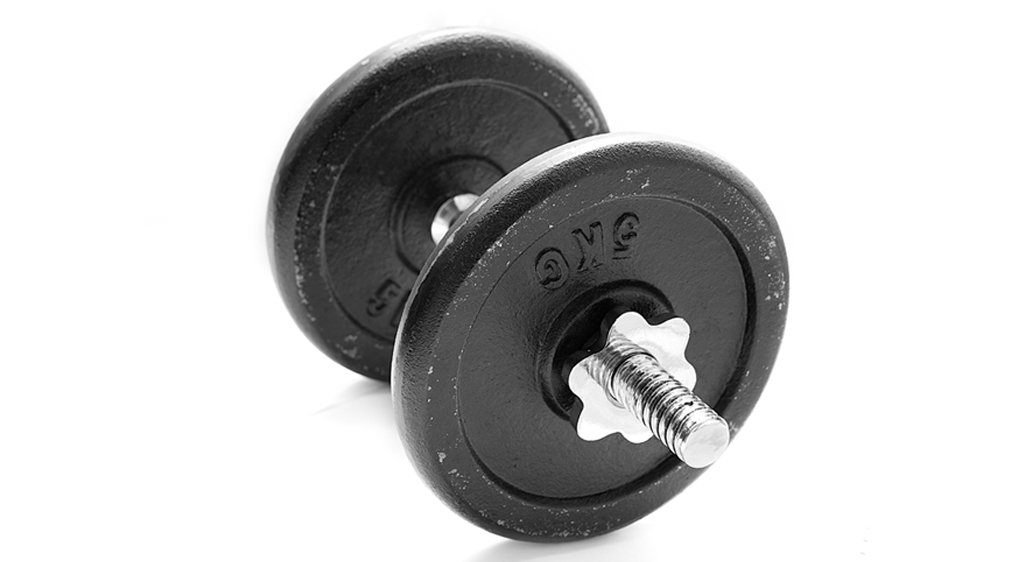Back Pain Statistics
Whether it’s acute or chronic, back pain is something that we all face at some point in our lives. Our back, particularly our spinal column, is our body’s main structural support. It receives a lot of load from a plethora of physical activities, ranging from bending over to carrying something heavy. Something as simple as sitting down can put a lot of stress on our back, particularly our lower back, if we do it incorrectly. Because of its integral role in supporting our body, our back is susceptible to pain. Back pain is one of the most common reasons for visiting a doctor. Causes of back pain can be as minor as sleeping in a bad position or as serious as a slipped disk. Knowing and avoiding this broad range of causes can save you the trouble of having back pain.
The Most Surprising Back Pain Statistics
- Back pain is the number 1 cause of disability in the world.
- About 80% of adults experience low back pain at some point in their life.
- More than 25% of adults will report experiencing low back pain within 3 months.
- Back pain is responsible for more than 264 million lost workdays in a year.
- Back pain is the 3rd most common reason for consulting with a physician.
- The number of years that people live with a disability due to low back pain have increased by 54% between 1990 and 2015.
- In the United States, low back pain costs US citizens at least $50 billion in health care costs each year.
- About 50% of US citizens report back pain each year.
- “The lifetime prevalence of non-specific (common) low back pain is estimated at 60% to 70% in industrialized
countries ” WHO
(American Chiropractic Association), (National Institute of Neurological Disorders and Stroke)
General Back Pain Statistics and Facts
1. The 2010 Global Burden of Disease Study estimated that low back pain is among the top 10 diseases and injuries that account for the highest number of DALYs worldwide.
The DALY is the Disability-Adjusted Life Year. In simple terms, a DALY is a year you live with a disability. Thus, having one DALY is like losing one year of a healthy life.
(World Health Organization)
2. Subacute low back pain is back pain that lasts between 4 and 12 weeks.
Most low back pain is acute, or short term, and lasts for a few days to a few weeks. It normally resolves on its own with self-care. This kind of back pain has no major impact on physical abilities. It is usually due to mechanical issues on how the parts of the back, like the spine, muscles, and nerves, fit together and move.
(National Institute of Neurological Disorders and Stroke)
3. Chronic back pain is back pain that lasts for 12 weeks or longer.
This kind of back pain persists even after an initial injury or underlying cause of acute low back pain has been treated. Chronic back pain is usually age-related, but can also result from an injury. Common causes are arthritis of the spine, spinal stenosis, disc problems, and myofascial pain syndrome, which is unexplained muscle pain and tenderness.
(National Institute of Neurological Disorders and Stroke), (John Hopkina Medicine)
4. About 20% of cases of low back pain develop into chronic.
In some cases, treatment successfully relieves chronic low back pain. Unfortunately in other cases, pain persists despite medical and surgical treatment. Because back pain is a disorder with several possible causes, if patients and doctors can’t treat the pain, they resort to managing it.
(National Institute of Neurological Disorders and Stroke)
5. About 60 to 70% of the people in industrialized countries have lifetime back pain.
Low back pain, in particular, is a common health problem among adults of the working-age population, and its prevalence or incidence increases with increase in age.
(World Health Organization)
6. By the age of 70, chronic back pain affects 79% of women and 53% of men.
The prevalence of chronic back pain increases with age. Although the prevalence rate for children and adolescents is lower than that seen in adults, the rate is rising.
(World Health Organization), (Science Direct)
7. Back pain statistics show that the prevalence of back pain peaks between the ages of 35 and 55.
Back pain peaking at this time is particularly difficult since most people within this age range are working. For this reason, back pain is a leading cause of activity limitation and work absence throughout the world.
(World Health Organization)
8. In Sweden, low back pain increased the absences from work by 4 times.
Between 1980 and 1987, the number of workdays lost due to low back pain rose from 7 million to 28 million.
(World Health Organization)
9. In 2010, back pain ranked in 3rd place as the most burdensome condition in the US.
Back pain previously ranked in 6th place in 1990. This rise shows how back pain and its burden have worsened over time.
(National Institute of Neurological Disorders and Stroke)
Economic Impact of Back Pain
10. A study found that back pain caused the loss of 101.8 million workdays.
This study included over 30,000 participants and found that about 4.6% of workdays are lost due to back pain. Males and females lost about the same number of workdays.
(National Center for Biotechnology Information)
11. Back pain statistics in the United States estimate that 149 million workdays are lost every year due to low back pain.
These losses result in an estimated loss of US$100 to 200 billion, two-thirds of which is due to lost wages and lower productivity.
(World Health Organization)
12. A study found that low back and neck pain cost the United States about $87.6 billion in healthcare.
This study looked into US healthcare expenses between 1996 and 2013. Among the different conditions, low back and neck pain ranked 3rd as the most expensive. Majority of these costs are in ambulatory care.
(Joseph L. Dieleman, PhD)
13. Back pain statistics in Europe show that about 30% of workers suffer from back pain.
Further back pain statistics estimate that half of all citizens living in the EU suffer from back pain at some point in their lives. Approximately 15% of EU citizens with back pain are on sick leave for over one month.
(European Agency for Safety and Health at Work), (Health and Safety International)
14. In a study on sitting workers in a Japanese manufacturing company, 15.1% reported low back pain (LBP) for at least 48 hours.
In female workers, weight and body mass index were correlated with LBP. In male workers, prior history of LBP, height. (≥170 cm), and weight (≥70 kg) were risk factors for LBP.
(Science Direct)
Lifestyle and Back Pain
15. A study found that 75% of call center workers with prolonged sitting have low back pain.
Moreover, the participants with chronic low back pain tended to show a more static sitting behavior with less micro-movements and longer periods of uninterrupted sitting.
(Science Direct)
16. Researchers find that workers who sit for around 8 hours per day experience intense low back pain.
The researchers also found that those who sat for more than 8 hours can be 3 to more than 5 times as likely to have severe back pain.
(Nidhi Gupta, PhD)
17. A study found that having a sedentary lifestyle causes a 3.5-fold increase in recurring low back pain.
Sedentary lifestyles have prolonged sitting at work and during leisure time. Sedentary lifestyles also have a trace or low physical activity. Moreover, this study found that people who drink more than 6 cups of coffee are more than 16 times more likely to experience low back pain.
(BioMed Research International)
Back pain in Children
18. Low back pain can be present in as much as 26% of children between the ages of 11 and 17 years old.
Data from back pain statistics in children and adolescents vary widely. However, similar to adults, low back pain in childhood increases with age. Girls are likelier to experience low back pain than boys.
(British Journal of Sports Medicine)
19. Only 7% of adolescents with lower back pain will seek medical care.
Most cases of low back pain in children are not serious. Back pain in children is commonly due to minor muscle injuries from physical activities like a pulled muscle or strained ligament. This kind of back pain can be remedied with self-care. However, there are serious reasons that require medical attention, such as scoliosis and spine injury.
(WebMD), (Very Well Health)
20. About 47% of low back pain cases in adolescent athletes are due to spondylolysis.
Spondylolysis is a spine fracture or defect. Children can be born with spondylolysis or it can develop early in their life because of several and abnormal causes.
(Lyle Micheli, MD and Robert Wood, MD), (University of Southern California)
Back Pain and other Physical Risk Factors
21. Back pain statistics show that obese men and women have a 16 and 21% higher chance of having low back pain, respectively.
On the other hand, overweight men and women have a nearly 10 and 16% higher chance of low back pain, respectively. Excess weight, especially in the midsection, can put stress on the pelvis, back, and spine, triggering the development of chronic back pain.
(American Journal of Epidemiology), (Very Well Health)
22. Taller men and women can have 44 and 22% higher risk of having low back pain, respectively.
There are several possible reasons why taller people are more prone to back pain. Taller people are likelier to slouch, which overstretches the back ligaments, causing pain. Moreover, the limbs of the human body act as levers. These levers are longer in taller people, and the longer the lever, the more force it exerts. Thus, taller people experience greater force on their core due to their longer limbs. This greater force puts stress on the back.
(American Journal of Epidemiology), (Sure Health Chiropractic)
23. About 30 to 78% of pregnant women experience back pain.
When pregnant, the ligaments in a woman’s body become softer and stretch. These effects prepare her for labor. However, these effects also strain the joints of her lower back and pelvis, causing back pain.
(National Center of Biotechnology Information), (NHS)
24. A study found that about 37% of smokers have back pain.
This same study also found that back pain was present in 33% of former smokers. The reason behind the connection between smoking and back pain is still unclear. A suggestion is that nicotine alters the perception of pain, making smokers more prone to feeling pain in the low back area. Smoking also increases inflammatory chemicals in the body, which can amplify pain.
(Bart Green, PhD)
25. Back pain may also occur due to other health conditions.
The health conditions that back pain may come along with include kidney stones, osteoporosis, fibromyalgia, joint inflammations such as in arthritis, tumors, and even infections of the vertebrae.
(National Institute of Neurological Disorders and Stroke)
Prevention and Treatment
26. Knowing and avoiding the causes of back pain is the better option, but there are treatments, which would depend if the back pain is acute or chronic.
Conventional treatments include hot or cold packs, rest, strengthening exercises especially for the back, physical therapy, and medications such as analgesics, nonsteroidal anti-inflammatory drugs, and counter-irritants. Unconventional treatments that have been getting popular are acupuncture and chiropractic. Surgery is always the last resort.
(National Institute of Neurological Disorders and Stroke)
Conclusion
Back pain is a heavy burden, especially for the working person. It can severely lower the quality of life. Knowing and avoiding the causes and risk factors of back pain will save not only from the agony, but also your wallet from the expenses that come with the pain.
References
American Chiropractic Association:
https://www.acatoday.org/Patients/What-is-Chiropractic/Back-Pain-Facts-and-Statistics
National Institute of Neurological Disorders and Stroke:
https://www.ninds.nih.gov/Disorders/Patient-Caregiver-Education/Fact-Sheets/Low-Back-Pain-Fact-Sheet
WHO:
https://www.who.int/medicines/areas/priority_medicines/Ch6_24LBP.pdf
Johns Hopkins Medicine:
Bergh et al., 2003:
https://www.sciencedirect.com/science/article/pii/S0885392403003294?via%3Dihub
Guo et al., 1999:
https://www.ncbi.nlm.nih.gov/pmc/articles/PMC1508850/
Dieleman et al., 2016:
https://jamanetwork.com/journals/jama/fullarticle/2594716
European Agency for Safety and Health at Work:
https://osha.europa.eu/en/publications/factsheets/10
Health and Safety International:
https://www.hsimagazine.com/press-release/impact-of-pain-costs-eu-up-to-441-billion/
Inoue et al., 2015:
https://www.sciencedirect.com/science/article/pii/S094926581530138X?via%3Dihub
Bontrup et al., 2019:
https://www.sciencedirect.com/science/article/pii/S0003687019301279#sec4
Gupta et al., 2015:
https://www.ncbi.nlm.nih.gov/pmc/articles/PMC4373888/
Citko et al., 2018:
https://www.hindawi.com/journals/bmri/2018/1965807/
Jones and Macfarlane, 2005:
https://adc.bmj.com/content/90/3/312.long
WebMD:
https://www.webmd.com/back-pain/news/20170130/low-back-pain-common-among-kids
Very Well Health:
https://www.verywellhealth.com/causes-of-back-pain-in-kids-4071958
Micheli and Wood, 1995:
https://jamanetwork.com/journals/jamapediatrics/article-abstract/517423
University of Southern California:
https://www.uscspine.com/childrens-spine-surgery/spondylolysis-spondylolisthesis/
Hershkovich et al., 2013:
https://academic.oup.com/aje/article-lookup/doi/10.1093/aje/kwt019
Sure Health Chiropractic:
https://www.sure-health.co.uk/advice/articles/do-tall-people-get-more-back-pain/





